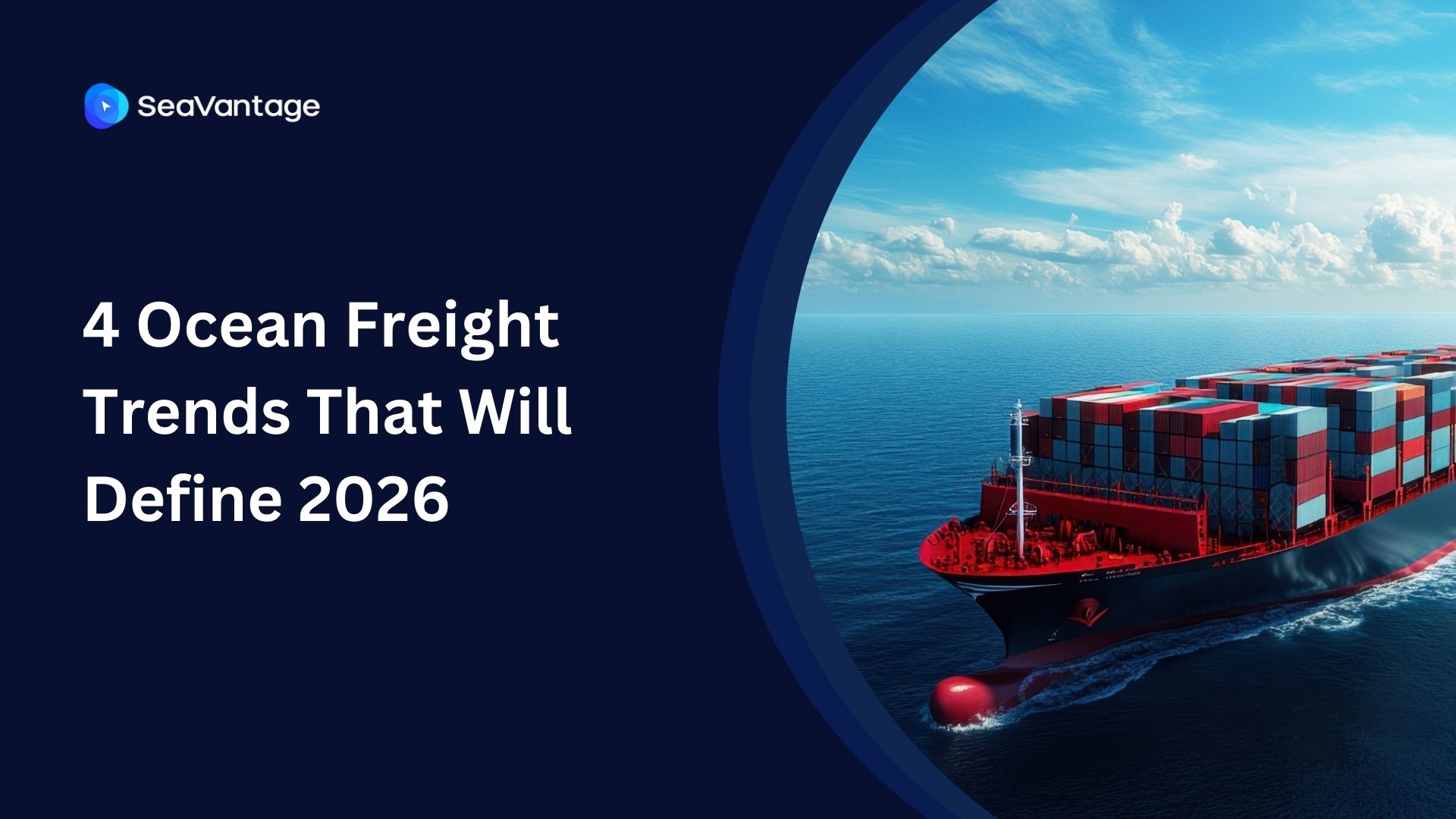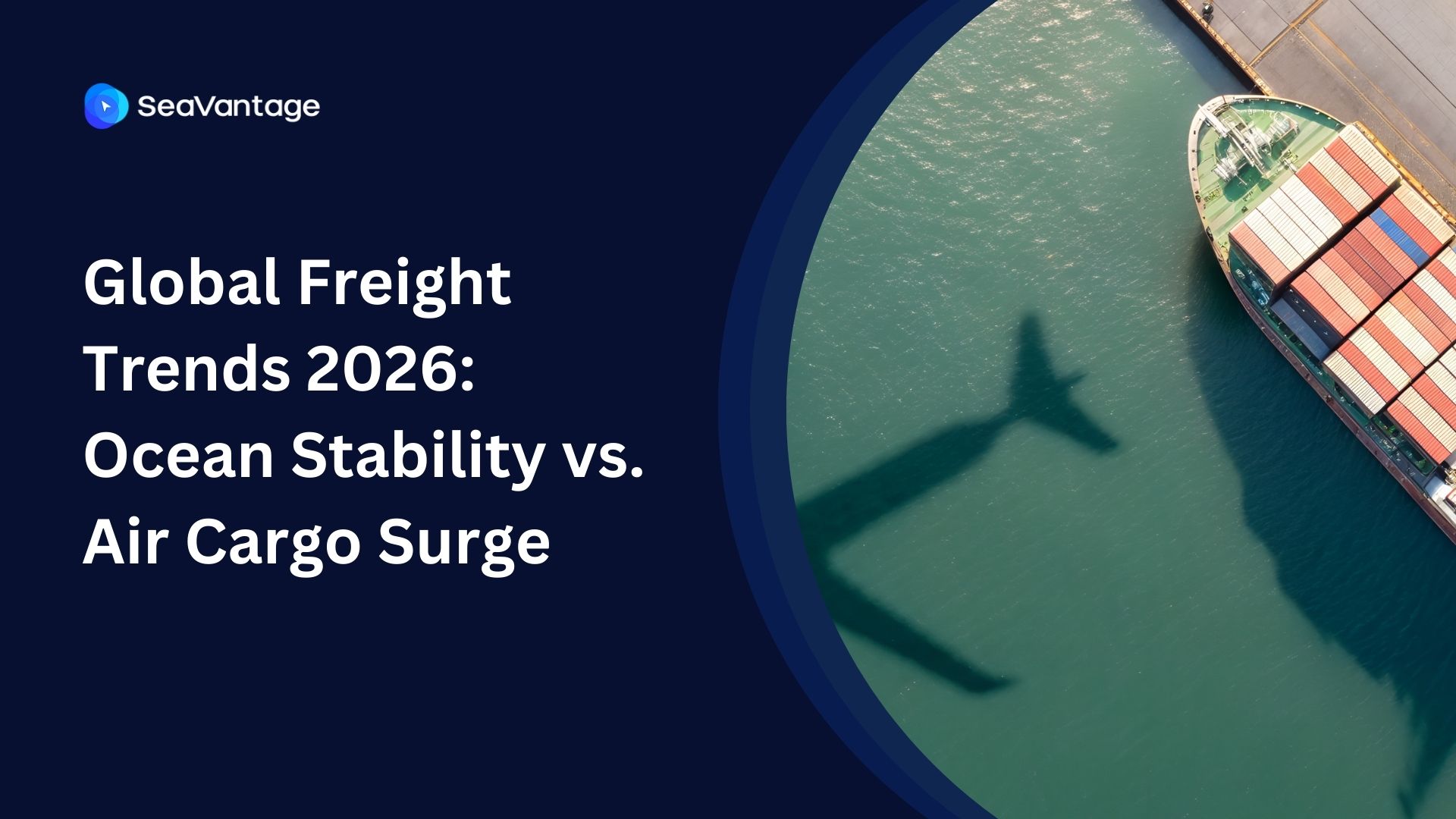The Impact of Geopolitical Events on Container Vessel Tracking and Shipping Routes in 2025

The Impact of Geopolitical Events on Container Vessel Tracking and Shipping Routes in 2025
Global trade is the lifeblood of modern economies, and the shipping industry lies at its core. In 2025, geopolitical tensions are reshaping shipping routes, and the integration of vessel and container tracking technologies is helping businesses navigate disruptions with greater agility. This blog delves into the real-world geopolitical scenarios affecting maritime logistics and explores how advanced tracking technologies play a pivotal role in maintaining supply chain resilience.
Geopolitical Events Reshaping Global Shipping in 2025
1. South China Sea Tensions
The South China Sea remains a flashpoint for territorial disputes involving China, the Philippines, Vietnam, and other nations. This region, through which one-third of global maritime trade flows, has seen increased military activity and unilateral claims over navigation rights.
Implications:
- Vessels are forced to reroute to avoid contested waters, leading to increased costs and transit times.
- Shipping companies must constantly monitor diplomatic developments to adapt their routes in real-time.
How Tracking Helps:
Satellite tracking systems enable shipping lines to monitor geopolitical hotspots and plan detours, ensuring safety without compromising operational efficiency.
2. Iran vs. U.S. and Israel
The longstanding tensions between Iran and the U.S., coupled with Israel’s regional security concerns, have heightened the risk in the Strait of Hormuz. This chokepoint, which handles nearly 20% of the world's oil trade, faces threats ranging from naval blockades to sabotage attempts.
Implications:
- Disruptions in the strait can lead to significant price volatility for oil and other commodities.
- Insurance premiums for vessels operating in the area have skyrocketed due to heightened risks.
Case in Point:
In 2023, a series of naval exercises in the region led to temporary restrictions on commercial shipping. Advanced tracking tools allowed operators to preemptively reroute vessels and avoid delays.
3. Ukraine and European Security Concerns
The war in Ukraine continues to influence shipping activities in the Black Sea and broader European markets. While some ports have reopened, others remain inaccessible due to ongoing conflict and security concerns.
Implications:
- Restricted access to Black Sea ports has disrupted grain exports, causing ripple effects on global food supply chains.
- European importers are increasingly relying on overland routes, which are costlier and less efficient.
How Tracking Helps:
Real-time tracking of vessels ensures that shipping companies can maintain visibility of cargo movements, even in volatile regions. Additionally, AIS systems help monitor maritime zones for sudden changes in accessibility.
4. Red Sea Conflicts
Houthi attacks in the Red Sea region have targeted commercial vessels, further highlighting vulnerabilities in chokepoints like the Bab al-Mandab Strait. This region connects the Mediterranean Sea via the Suez Canal to the Indian Ocean, making it a critical artery for global trade.
Implications:
- Increased security measures are required, raising costs for shipping companies.
- Diversions to alternative routes increase fuel consumption and delivery times.
Case in Point:
In 2025, a tanker targeted by drone strikes avoided significant damage thanks to coordinated efforts between naval forces and vessel operators using satellite tracking to anticipate threats.
5. Potential U.S. Involvement in the Panama Canal
The Panama Canal, a critical link between the Atlantic and Pacific Oceans, is facing geopolitical and operational challenges. Speculation about increased U.S. involvement in its governance has raised concerns about potential trade restrictions.
Implications:
- A change in management could lead to altered toll rates, affecting the cost-efficiency of using the canal.
- Regional tensions may influence shipping lines’ reliance on this critical route.
How Tracking Helps:
Tracking technologies provide historical and real-time data, allowing operators to calculate cost-benefit scenarios when considering alternative routes, such as the Cape Horn passage.
The Role of Vessel and Container Tracking in Navigating Geopolitical Uncertainty
Advancements in Tracking Technologies
- Satellite Tracking Systems
- These systems provide global coverage, enabling real-time monitoring of vessel locations and movements (Global Market Insights).
- Internet of Things (IoT) Devicessome text
- IoT-enabled containers allow for continuous monitoring of cargo conditions, such as temperature and humidity, critical for perishables.
- Automated Identification Systems (AIS)some text
- AIS technology aids in collision avoidance and provides precise data on vessel positions, speeds, and routes.
- During geopolitical disruptions, AIS helps operators quickly assess risks and make informed routing decisions.
Case Studies: Tracking in Action
- South China Sea Navigation
A bulk carrier navigating contested waters used satellite data to adjust its course, avoiding both military exercises and weather-related delays. - Strait of Hormuz Surveillance
Tanker operators utilized AIS systems to synchronize their movements with naval escorts, ensuring safe passage amid heightened tensions. - Black Sea Port Reopenings
During the reopening of select Ukrainian ports, container tracking tools helped exporters optimize cargo movements and mitigate delays caused by congestion.
Conclusion
As geopolitical events continue to reshape global shipping routes in 2025, vessel and container tracking technologies remain indispensable tools for navigating uncertainty. These innovations not only bolster supply chain resilience but also empower the industry to adapt to a rapidly changing landscape. By embracing these advancements and implementing best practices, shipping companies can ensure seamless operations and maintain their competitive edge in the global market.
Frequently Asked Questions (FAQ)
1. What is vessel tracking, and why is it important?
Vessel tracking involves using technologies like satellite systems and AIS (Automatic Identification Systems) to monitor the real-time location, movement, and status of ships. It is crucial for:
- Enhancing supply chain visibility.
- Improving operational efficiency.
- Ensuring safety in high-risk regions impacted by geopolitical tensions.
2. How do geopolitical events affect global shipping routes?
Geopolitical events, such as territorial disputes, conflicts, or trade sanctions, can disrupt shipping routes by:
- Forcing vessels to reroute to avoid contested areas.
- Increasing transit times and operational costs.
- Raising insurance premiums for ships operating in high-risk zones.
3. What technologies are used for container tracking?
Container tracking relies on:
- IoT Devices: Monitoring cargo conditions like temperature and humidity in real time.
- RFID Tags: Providing location and status updates for individual containers.
- Satellite Systems: Ensuring global visibility across remote areas.
These tools allow for seamless tracking throughout the entire supply chain.
4. How can shipping companies mitigate risks associated with geopolitical disruptions?
Shipping companies can mitigate risks by:
- Using real-time tracking technologies to monitor geopolitical hotspots.
- Diversifying routes to avoid high-risk regions.
- Collaborating with maritime security agencies for up-to-date intelligence.
- Investing in predictive analytics to foresee potential disruptions.
5. What are the major geopolitical hotspots for shipping in 2025?
Some of the most significant hotspots in 2025 include:
- South China Sea: Tensions over territorial claims.
- Strait of Hormuz: Escalations between Iran, the U.S., and Israel.
- Black Sea: Ongoing conflict in Ukraine.
- Red Sea: Houthi-led attacks on commercial vessels.
- Panama Canal: Potential shifts in governance affecting trade dynamics.
6. How do tracking technologies contribute to supply chain resilience?
Tracking technologies ensure supply chain resilience by:
- Offering real-time visibility into cargo movements.
- Providing data for rerouting decisions during disruptions.
- Reducing delays and operational inefficiencies.
By leveraging these tools, businesses can maintain seamless operations even in the face of geopolitical uncertainties.
2025년 9월, 주요 글로벌 항만에서 어떤 운송사가 가장 긴 선박 체류 시간을 기록했는지 확인해보세요. 트렌드를 비교하고, 지연을 파악하며, 전체 항만 데이터를 통해 운송 전략을 최적화할 수 있습니다.
2025년 8월, 주요 글로벌 항만에서 어떤 운송사가 가장 긴 선박 체류 시간을 기록했는지 확인해보세요. 트렌드를 비교하고, 지연을 파악하며, 전체 항만 데이터를 통해 운송 전략을 최적화할 수 있습니다.
2025년 7월, 주요 글로벌 항만에서 어떤 운송사가 가장 긴 선박 체류 시간을 기록했는지 확인해보세요. 트렌드를 비교하고, 지연을 파악하며, 전체 항만 데이터를 통해 운송 전략을 최적화할 수 있습니다.
iscover the 4 critical ocean freight trends for 2026, from the Red Sea reopening and fleet overcapacity to shifting global trade maps. Prepare your supply chain now.
Discover key 2026 freight market trends: Port of Houston expansion, air cargo "super peak," and ocean freight stability. Plan your supply chain with SeaVantage.
Explore November 2025 global port dwell time data. See which ports and carriers led in efficiency across Antwerp, Busan, Long Beach, Rotterdam, and Singapore.



.svg)





.jpg)

.png)